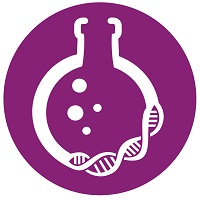Bioanalytics
Rapid Fires: Biomarker, Platform and Support
Biomarker Challenges: Spiked Quality Controls, Can They Bias your Results?
Tuesday, November 11, 2025
3:00 PM - 3:15 PM CT
Location: 221 AB

Marc-Olivier Pepin, BSc
Principal Scientist, Biomarkers
Charles River
Montreal, Quebec, Canada
Rapid Fire Speaker(s)
Quality controls (QCs) are an inherent part of every ligand binding assay (LBA), as they help monitor within-run and between-run precision and relative accuracy. QCs are also critical to ensuring that an LBA yields reproducible results over time, as supported by several publications and regulatory guidances. QCs can take different forms, such as neat or diluted biological matrices (Matrix QCs) and recombinant biomarkers diluted in matrix or surrogate matrix (Spiked QCs). While it is widely acknowledged that matrix QCs better reflect assay performance compared to their spiked counterparts, the impact of relying solely on spiked QCs to assess precision and accuracy remains less understood. Although most scientists strive to include matrix QCs in their methods, they sometimes use only one (e.g a low QC), with mid and high QCs being spiked, or they may rely entirely on spiked QCs due to the low endogenous concentration of their biomarkers of interest.
During this Rapid Fire presentation, assay performance tracking using different types of QCs such as matrix QCs, recombinant proteins spiked into surrogate matrix, and spiked QCs prepared in matrix will be showcased. The potential negative impact on sample results when relying on spiked QCs will also be discussed using case studies. This presentation will emphasize the importance of using matrix QCs to monitor each level of an LBA standard curve and the possible consequences that spiked QCs may have on study data.
During this Rapid Fire presentation, assay performance tracking using different types of QCs such as matrix QCs, recombinant proteins spiked into surrogate matrix, and spiked QCs prepared in matrix will be showcased. The potential negative impact on sample results when relying on spiked QCs will also be discussed using case studies. This presentation will emphasize the importance of using matrix QCs to monitor each level of an LBA standard curve and the possible consequences that spiked QCs may have on study data.
Learning Objectives:
- Upon completion, participants will be able to differentiate between Matrix and Spiked QCs.
- Upon completion, participants will be able to understand the impact of using either matrix or Spike QCs.
- Upon completion, participants will be able to understand the reason for have matrix QCs monitoring each section of an LBA standard curve.



